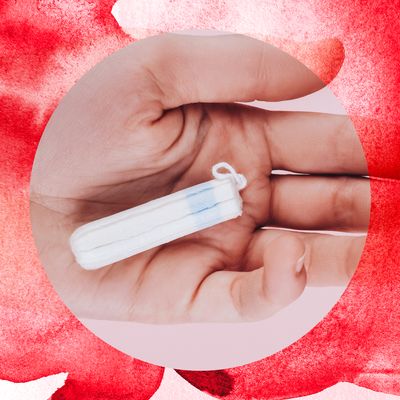
If you were a teenager growing up in the 1990s or early aughts, you likely picked up a teen magazine with an article that warned you about a horrifying and fatal condition connected to tampon use: toxic shock syndrome (TSS). Leaving a tampon in for too long, these stories told us, could lead to terrible health consequences, including amputation, multiple organ failure, and death.
But while it’s true that TSS, a complication of bacterial infections that medical experts first named in 1978, has been associated with tampon use, it is unlikely to happen to you, says Dr. Mary Jane Minkin, clinical professor of obstetrics, gynecology, and reproductive sciences at the Yale School of Medicine. “The major thing that I try to emphasize to folks is that it’s a very, very rare condition,” she says. “It doesn’t mean women should be scared about using tampons.”
In fact, TSS doesn’t only happen in women and doesn’t only result from using tampons, Minkin says. She spoke with the Cut about everything you need to know about toxic shock syndrome.
What causes toxic shock syndrome?
Someone needs to have a specific strain of staph bacteria (Staphylococcus aureus) in order to contract toxic shock syndrome through tampon usage, says Minkin. If they do, the staph can multiply and produce a harmful toxin. About 20 percent of people have the staph bacteria on their skin and more have it in their nose, according to a 2011 study.
How did tampon use become associated with toxic shock syndrome?
At the condition’s peak in the late 1970s and early 1980s, there were about 200 yearly cases of TSS, Minkin says. A lot of them involved young girls and women who used tampons. Experts came to the conclusion that the staph could multiply in the tampon’s fibers, often superabsorbent ones, producing the toxin. “It was a terrible thing. People didn’t know what it was and then they figured out it was related to this toxin produced by the organism,” she says. “The association was, ‘Oh my goodness. It must be related to tampon usage.”
TSS can also occur following skin infections, burns, nosebleeds (where packing was used to absorb the blood), or after childbirth or surgery, according to the National Institutes of Health (NIH). While it’s not known how many cases of TSS are associated with tampon use, the NIH estimates that, in general, about half are menstruation related. “However, again, the key thing is that the number of cases of toxic shock syndrome in the United States these days is fortunately very small,” Minkin says.
How many cases of toxic shock syndrome are there annually?
Research estimates TSS occurs in about one in 100,000 women per year, according to the National Organization for Rare Disorders. In 2020, the most recent year for annual CDC data, there were 24 cases in the U.S. There have been 19 cases this year thus far. (By comparison, 7 in 100,000 and 9 in 100,000 women are diagnosed with cervical and ovarian cancer, respectively, while sexually transmitted infections such as syphilis impacts 16 in 100,000 people, gonorrhea affects 214 in 100,000 people, and chlamydia 495 in 100,000.)
What are the exact symptoms of toxic shock syndrome?
While TSS is very rare, it can be fatal and you should still know when to get medical care. The symptoms of TSS include high fever, rash, desquamation (when the patient sheds their skin in large sheets), muscle aches, vomiting or diarrhea, confusion, low blood pressure, and, later, multiple organ failure (usually the kidneys and liver). Minkin says the symptoms would show up within a few days of your period. “If somebody shows up with 102-degree fever, this scalding-type rash, and her skin is falling off, you definitely wanna worry about that and get her evaluated,” Minkin says. “But if somebody says ‘I have my period and I’m not feeling well’ but they have no fever and they have no rash, it’s worth paying attention to it and talking to your health-care provider about what’s going on. But it’s highly unlikely to be toxic shock syndrome.”
What can you do to prevent toxic shock syndrome?
The recommendation by gynecologists is to use the lowest absorbency you can (and, yes, the terms regular, super, and super plus are standardized). Minkin says it doesn’t matter if the tampon is made of synthetic or natural fibers. Researchers don’t know how many women have the staph bacteria in their vaginal flora. While you could easily have cultures taken at your next doctor’s appointment, Minkin says vaginal flora change throughout your cycle, so you would need regular, ongoing cultures to check for it (which, she says, aren’t necessary for prevention). “The most important thing is to change your tampon regularly,” she says. “Don’t leave it in all day, you know, and keep it in there forever. It’s a sort of silly idea but give your vagina a chance to breathe.”
More From This Series
- The Best Period Products for Trans Men and Nonbinary People
- How to Safely Skip Your Period
- Is Your Body Out of Sync With a Man’s World?

